5 Examples of Must-Have Ecommerce Marketing Content

The numbers vary a bit depending on which resource you consult. But most researchers agree consumers see anywhere from 4,000 to 10,000 marketing messages per day.
Let’s split the difference and say it’s 7,000. Using that estimate, the average consumer is exposed to about five ads per minute. No wonder ad fatigue is a thing.
If you want your marketing messages to be one of the 7,000 that a consumer actually appreciates, your marketing content has to be different. It’s got to be creative. I’m not saying you need to reinvent the wheel. But it may be a good idea to put some LEDs on it.
Take a look at five types of ecommerce marketing content that can help your brand stand out.
1. Quizzes
There are a couple different routes you can take when it comes to using quizzes for ecommerce marketing. You can take a Buzzfeed-esque approach with something like “Which Kind of Dinosaur Are You?” Or you can create a more product-specific quiz — e.g., “Is It Time to Upgrade Your Bronzer?”
The first type of quiz is good for showcasing your brand personality. It also helps you engage shoppers who aren’t necessarily looking to buy from you just yet. And with quizzes like these, you can throw in product recommendations at the end based on the shopper’s result. The shopper gets to have some fun without feeling as if they’re being marketed to. It’s a little less salesy and still gives you the opportunity to promote your products.
Quizzes in the second category are geared more towards encouraging a purchase. These are effective for shoppers who are looking to buy but need a little inspiration. Quizzes like these make the brand-customer interaction friendlier. They demonstrate your brand wants shoppers to buy the items that make the most sense for them — not what’s best for you.
Real-World Example: Kershaw Knives
Kershaw Knives uses the first strategy with its “knife-style” quiz.
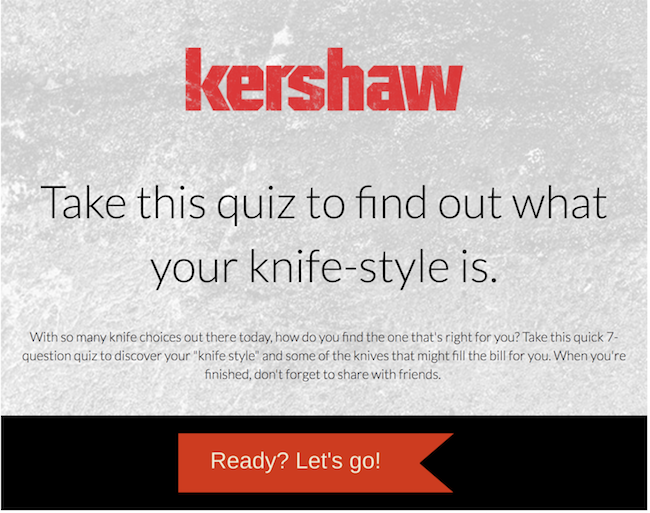
(Source)
Shoppers answer questions such as, “How would you rather spend your weekend?” and “How do you most commonly communicate?” The retailer includes no questions specifically related to knives. So even though the quiz is branded, the questions aren’t over-the-top salesy.
After clicking through seven questions, shoppers find out their exact knife-style:
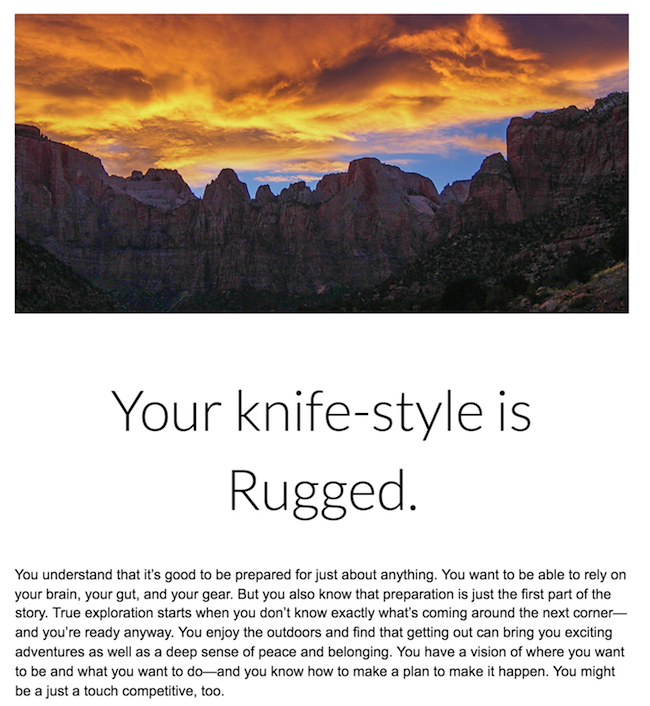
The shopper also gets a list of recommended knives that fit their “knife-style”.
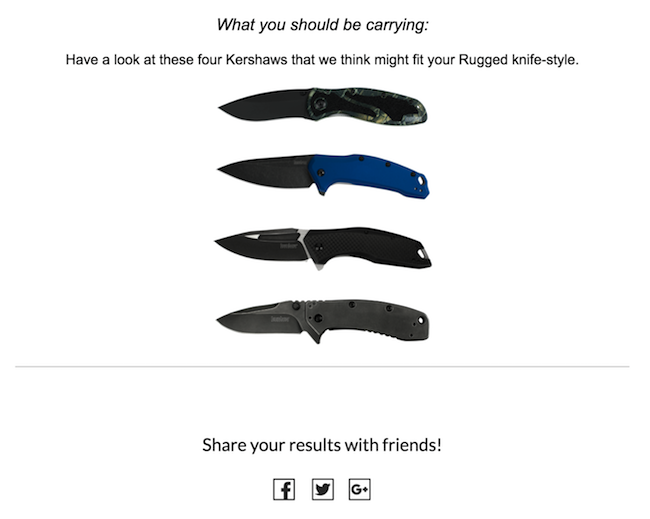
Clicking on one of the images sends shoppers straight to that knife’s product page.
Real-World Example: Birchbox
Birchbox’s “What’s Your Makeup Brand Spirit Animal?” is an example of a promotional, merchandise-specific quiz.
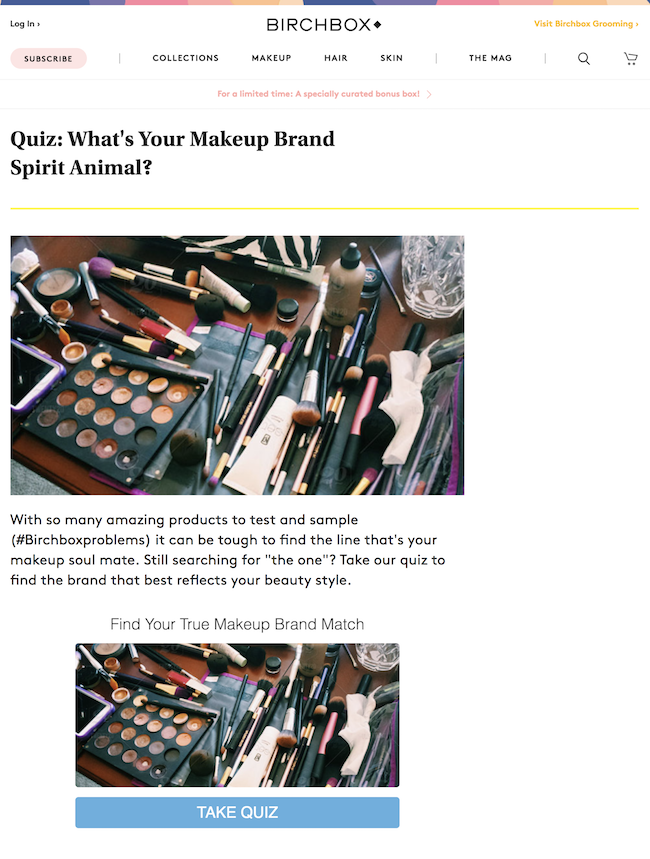
(Source)
Shoppers answer five questions like “What’s your go-to lip look?” and “What’s your favorite sweet treat?” And at the end, they receive a personalized brand recommendation:
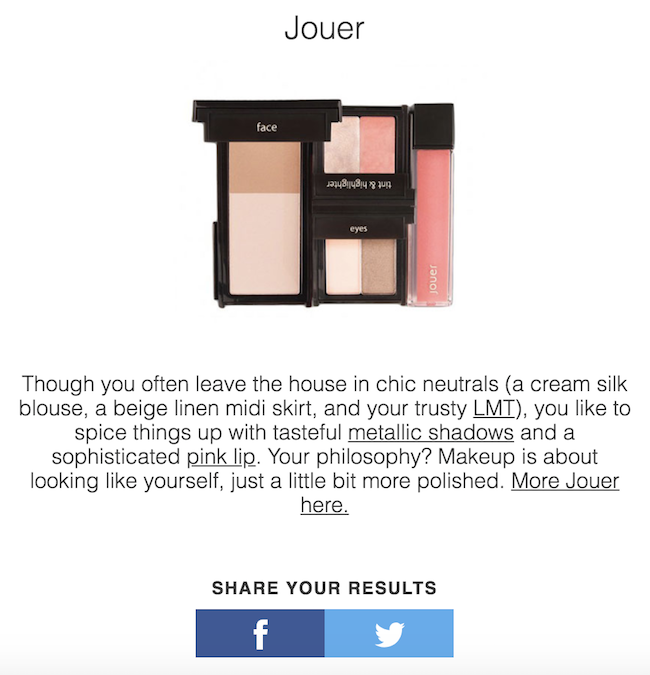
IMPORTANT: Both Kershaw Knives and Birchbox include social sharing buttons on the quiz results page. Doing this makes it easy for the shopper to expose your brand to their friends and family. And this increases your audience size.

2. Shoppable Videos
I won’t lie: I think shoppable videos are one of the most impressive types of ecommerce marketing content on this list. They’ve just got this futuristic feel with features you’d expect to see in a sci-fi movie.
In a shoppable video, shoppers can click on different products shown in the video to learn more about them. There’s no need to navigate away from the page.
Real-World Example: John Varvatos
For its 2016 collection, menswear brand John Varvatos decided to ditch the lookbook. Instead, the retailer created a shoppable video to show off the new line.
The video starts with the John Varvatos logo and a message letting viewers it’s interactive:
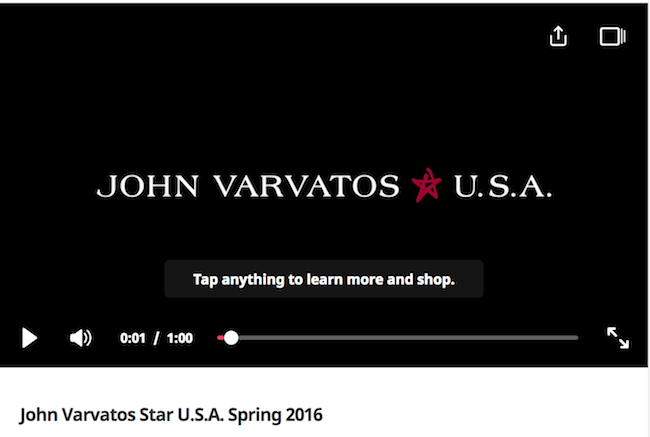
(Source)
As a shopper watches, he or she can click on pretty much any item the models are wearing. In the below example, that includes the jacket, shoes, and bag:
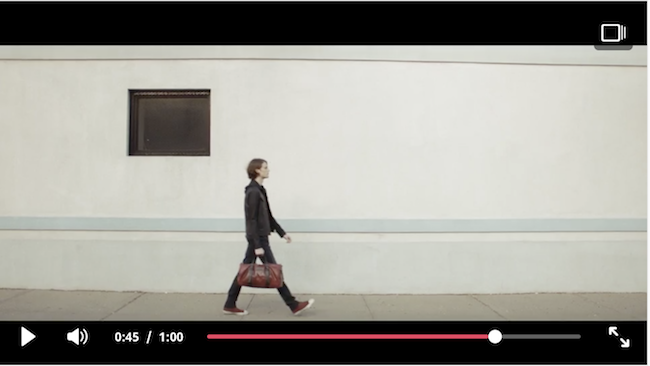
Clicking on an item adds it to the shopper’s item list. This can be accessed at any time via the square icon in the top right corner:
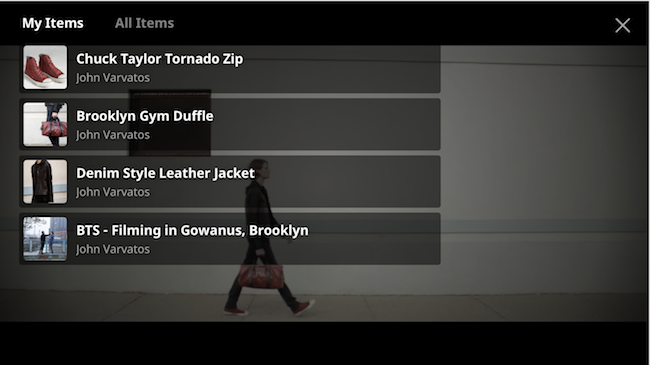
When a shopper selects a product from his list, it shows him photos and a description of the item:
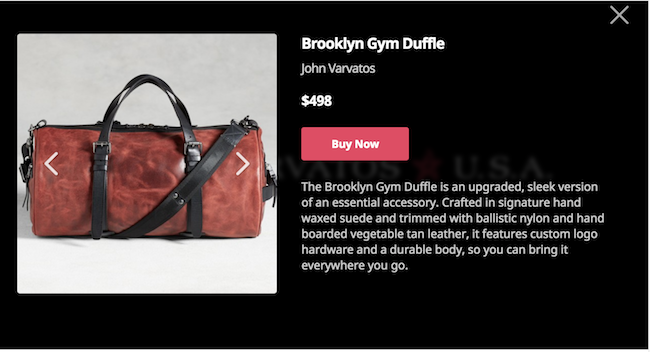
Clicking on “Buy Now” sends the shopper directly to that product’s page on John Varvatos’ website. From there, the shopper can customize the item and add it to his cart.

3. Twitter and Instagram Polls
Twitter and Instagram polls are examples of ecommerce marketing content that don’t require a substantial time investment. Both are easy to set up and provide an opportunity to get direct feedback from your followers.
While both are great for engagement, each has its own pluses and minuses. For example, brands can add up to four choices in a Twitter poll. Instagram polls, on the other hand, allow followers to select only one of two answers. Additionally, brands can set how long a Twitter poll will be active. An Instagram poll exists only in the brand’s story, which means it will last a maximum of 24 hours.
On the flipside, the only graphical elements brands can add to a Twitter poll are emojis. They aren’t allowed to include any images with a poll. But Instagram polls are actually overlaid on top of a photo or video in the brand’s story. A brand could post a photo of two different products and have followers vote on which they like best. Or they can use a video to talk about an upcoming event and ask followers how they think it should be promoted.
It’s up to you to decide which option makes the most sense for your brand and your audience.
Real-World Example: Nykaa
Beauty retailer Nykaa wanted to see how two of their most popular products stacked up against each other. They posted a photo of a model holding one in each hand and asked followers to choose their favorite.
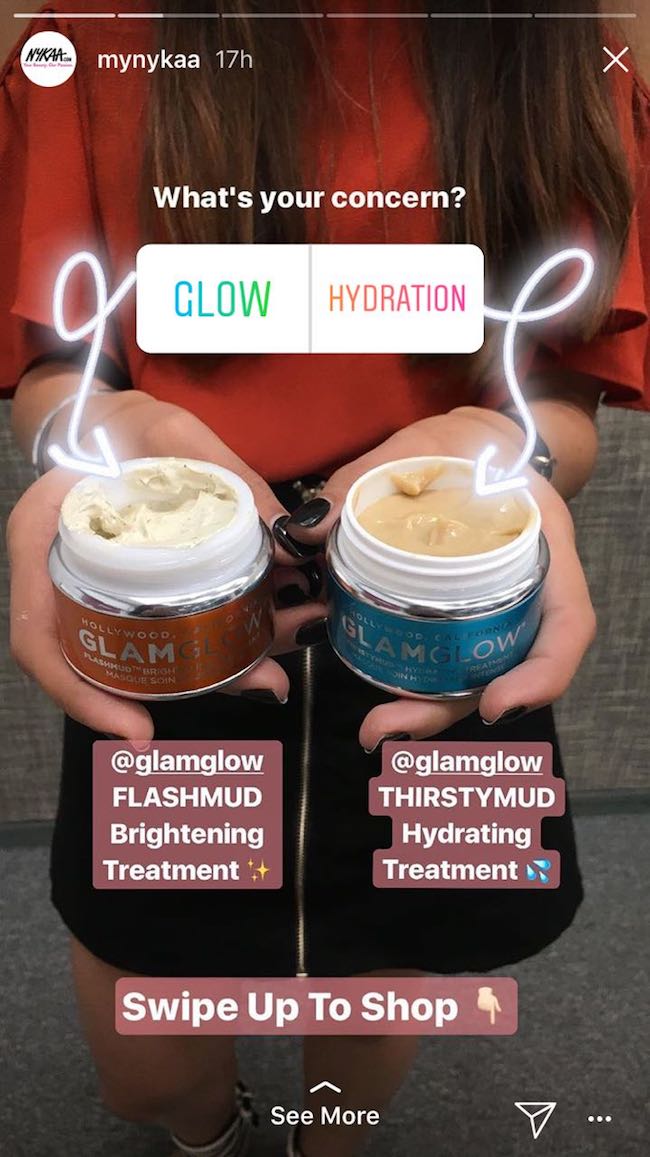
(Source)
Nykaa also took advantage of the “See More” option in Instagram Stories. When followers swiped up, they were redirected to Nykaa’s website where they could buy either product.
Real-World Example: Dunkin’ Donuts
Choose any random date, and I guarantee there’s a silly holiday associated with it. For example, September 29 is National Coffee Day. In celebration, Dunkin’ Donuts created the following Twitter poll:
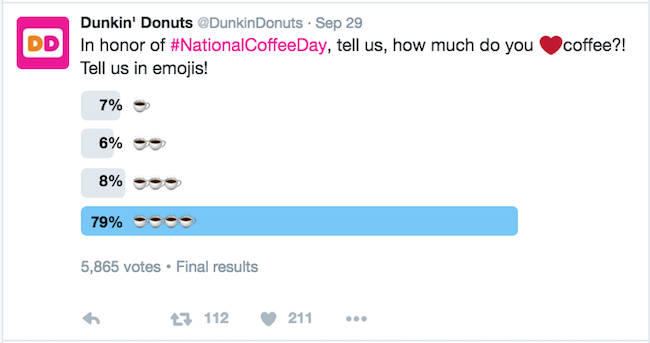
(Source)
Dunkin’ Donuts is darn proud of its coffee. But in this case, the donut chain decided to use a Twitter poll to increase engagement, not promote the brand.

4. Post-Purchase Emails
Personally, I’m a major advocate of email marketing. And since starting at ShipStation, I’ve realized just how important post-purchase email correspondence is.
Of course it’s vital to connect with potential customers and re-engage previous customers you haven’t heard from in a while. But no other type of shopper is most receptive to your emails than the ones who have recently ordered from you.
You need to take advantage of the fact your brand is still bouncing around a recent customer’s brain. Because humans have ridiculously short attention spans. And if you don’t keep the brand-customer conversation going with timely ecommerce marketing content, you run the risk of a customer forgetting about you completely.
Real-World Example: Nisolo
Nashville-based Nisolo sells eco-friendly footwear and accessories. Because the shoes are handmade, the material tends to be a little more temperamental than what’s used in mass-produced footwear. After ordering from Nisolo, customers receive this email:
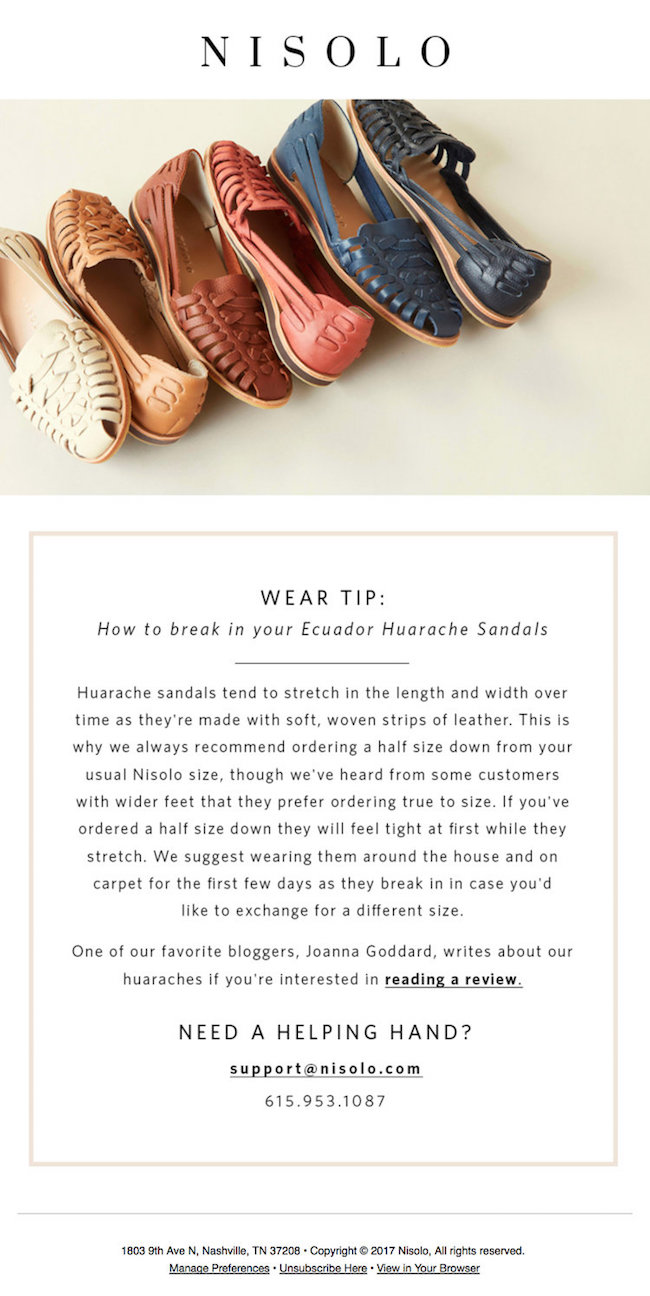
(Source)
The email includes advice about how to properly break in the shoes and make sure the customer has chosen the right size.
Real-World Example: THE ICONIC
There are two especially effective ways to encourage a first-time customer to order from you again. The first is to give them a warm welcome and let them know you appreciate their business. The second is to send them a coupon.
THE ICONIC’s email does both:
![]()
(Source)
Plus, THE ICONIC’s email leverages a sense of urgency with “Hurry, Offer Expires in 30 Days”. And it also features a SHOP NOW call-to-action to make it easy for the shopper to redeem the promo code.

5. Episodic Videos
I don’t know a single person who would willingly watch an eight hour movie in a single sitting. But I know plenty of people who are more than happy to watch 10+ episodes of Game of Thrones in a row.
When content creators break media up into chapters, content consumers have more control over how much time they spend watching. And by not giving the story away all at once, the creators encourage the consumers to keep coming back for the next chapter. And the next.
This is why episodic videos are such a powerful piece of ecommerce marketing content. If you can create a compelling narrative with relatable characters and manage to subtly throw in your brand? You’re well on your way to building one heck of a loyal audience.
Real-World Example: Starbucks – “1st & Maine”
“1st & Maine” is an animated web mini-series that takes place inside a Starbucks. It’s the brainchild of three former writers for The Simpsons and features a cast of recurring animal characters. Each episode is about 90 seconds long and tells a story about the everyday lives of the store’s employees and customers.
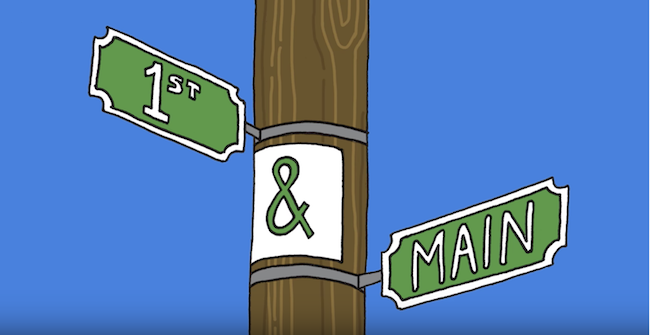
(Source)
“1st & Maine” is light-hearted and funny. The writers’ goal was to create a narrative that illustrated the fact every person has their own story. And, based on their own experiences, the best setting for this was a Starbucks.
The Takeaway
It doesn’t matter if your ecommerce marketing budget is $1,000 or $10,000. What matters is how innovative and engaging your content is. As long as you create your campaigns based on the interests of your audience, you’ll be in good shape.



